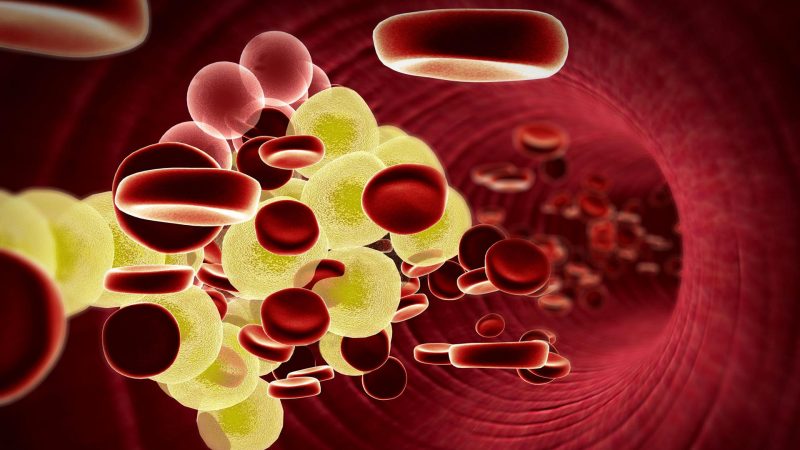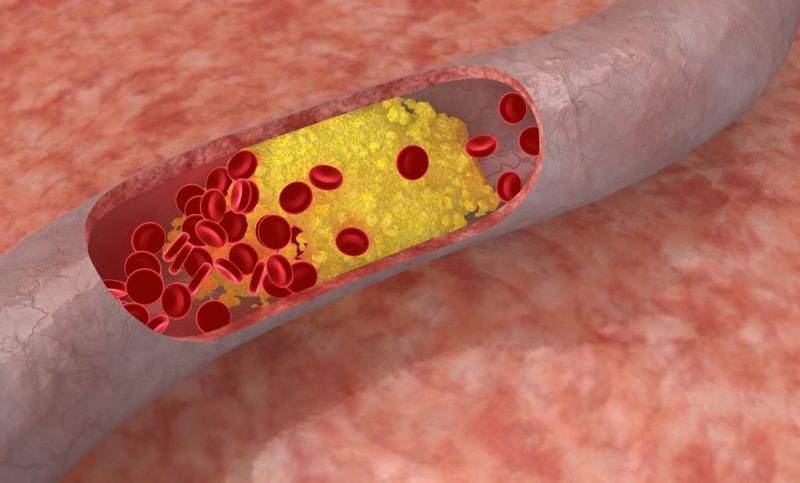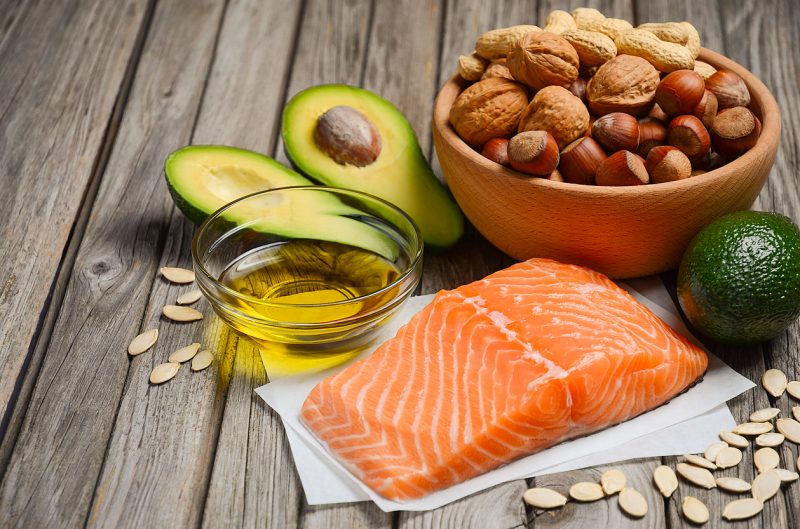Each person’s cell membranes contain cholesterol, an organic compound produced by the body from the food it uses. Excess cholesterol compounds in the blood threatens the development of cardiovascular disease. Properly organize nutrition and avoid health problems will help the table of cholesterol in women by age, compiled by our experts.
Material Content:
What increases blood cholesterol in women?
Cholesterol is a white fat-like substance from the group of lipids, without which most physiological processes in the human body would be impossible. Most of the cholesterol compounds are produced in the liver, kidneys and intestines, and some more comes from food.

Stably maintained blood cholesterol is responsible for:
- formation and support of the cell framework;
- the production of steroid hormones;
- intestinal mucosa functionality;
- vitamin D production
Since cholesterol, being a wax-like substance, does not dissolve in water, its distribution throughout the body is provided by lipoproteins - proteins, the connection with which forms soluble forms.
In terms of density, these complex compounds differ.High molecular weight plasma lipoproteins are characterized by high density, abbreviated as HDL, and are known as “good” cholesterol because they prevent the development and consequences of atherosclerosis.
Low molecular weight and very low molecular weight (LDL and VLDL, respectively) lipoproteins are called "bad" cholesterol, as they contribute to the subsidence and accumulation of cholesterol plaques on the walls of blood vessels and the gradual clogging of arteries.
Exceeding the norm of cholesterol for 10 years inevitably leads to vascular pathologies and heart attacks.
The main causes of high cholesterol
Due to the physiological characteristics of the body, women more often than men suffer from the consequences of increasing cholesterol.
This is because the balance of lipids depends on the hormonal level in the body. And in women, the amount of hormones in the blood changes throughout life - first during pregnancy, then when menopause occurs.

Hormonal changes accompanying the most important periods in a woman’s body are characterized by instability in the production of hormones - during pregnancy, their number increases sharply, and during menopause it drops rapidly.
And while in the body of pregnant women a huge amount of cholesterol is spent on the production of hormones necessary for the normal development of the fetus, then with the advent of age factors, lipid compounds remain unclaimed, due to a sharp decrease in the level of hormonal levels.
Among other factors that provoke inflammation of the walls of blood vessels and thus increase their vulnerability to cholesterol deposits include:
- excess weight;
- alcohol abuse;
- excessive consumption of foods containing carbohydrates and saturated fats;
- smoking;
- low physical activity;
- dysfunction of the internal organs - the thyroid gland, liver, adrenal glands, pancreas;
- hereditary predisposition.
As a rule, an increase in the level of lipids in the body begins after a woman reaches the age of 20. To slow down or even stop the process of accumulation of lipoprotein substances is capable of a special diet with high cholesterol and regular physical activity.
The norm of cholesterol for women by age
The mismatch of the cholesterol level with the norm negatively affects the viscosity of the blood and the strength of the vessels. Moreover, a woman’s health is negatively affected not only by an increase, but also by a decrease in lipid parameters.

To avoid a possible deterioration in well-being, it is necessary to periodically check the cholesterol in the body and take appropriate measures if the results of the study confirm the presence of pathology. Experts recommend an examination every five years by all women after reaching 20 years of age.
With age, the concentration of lipoproteins in the blood increases. Therefore, doctors associate a safe level of cholesterol compounds in the blood with age.
In young women, lipid levels are usually low, since the intensity of metabolic processes allows you to cope with harmful substances even with improper nutrition.
The norm of cholesterol by age from 40 to 50 years
After the age of 40, the metabolism slows down, and the woman’s state of health changes for the worse. Especially in the presence of bad habits. Therefore, the norm indicators for forty-year-olds are higher than for thirty-year-olds.
For ages 50-60
Fifty-year-old women have low vascular permeability and elasticity, against a background of various chronic diseases. In addition, during this age period, reproductive function decreases, and with it, the amount of estrogen, the female sex hormones that stabilize lipid levels, decreases.

Accordingly, the norm of cholesterol in women after 50 years becomes even higher than before.
Cholesterol standard after 60 years
The 60-year-old milestone in women is characterized by the presence of many chronic diseases and the onset of menopause, which increases the concentration of cholesterol compounds in the blood. During this period, it is especially important to constantly monitor cholesterol and sugar levels, as well as to eat right.
After the onset of 70 years, lipid normal values are significantly reduced.
True age cholesterol table
A blood test for cholesterol is given from a finger. The results of the study allow us to determine not only the total level of lipids, but also the amount of LDL and HDL in the molar mass of a substance per liter of blood.
The table shows that the rate indicators gradually increase with age.
| Age | General indicators mmol / l | LDL, mmol / l | HDL, mmol / l |
|---|---|---|---|
| 20 years | 3.16 – 5.59 | 1.48 – 4.12 | 0.85 – 2.04 |
| 25 years | 3.32 – 5.75 | 1.81 – 4.04 | 0.96 – 2.15 |
| 30 years | 3.37 – 5.96 | 1.84 – 4.25 | 0.93 – 1.99 |
| 35 years | 3.63 – 6.27 | 1.94 – 4.45 | 0.88 – 2.12 |
| 40 years | 3.81 – 6.53 | 1.92 – 4.51 | 0.88 – 2.28 |
| 45 years | 3.94 – 6.86 | 2.05 – 4.82 | 0.88 – 2.25 |
| 50 years | 4.20 – 7.38 | 2.28 – 5.21 | 0.96 – 2.38 |
| 55 years | 4.45 – 7.77 | 2.31 – 5.44 | 0.96 – 2.35 |
| 60 years | 4.45 – 7.69 | 2.59 – 5.80 | 0.98 – 2.38 |
| 65 years | 4.43 – 7.85 | 2.38 – 5.72 | 0.91 – 2.48 |
| > 70 years old | 4.48 – 7.25 | 2.49 – 5.34 | 0.85 – 2.38 |
The optimal level is total cholesterol, not exceeding 4.5 mmol / L. The optimal level of LDL is not higher than 4.1 mmol / L, and HDL is not lower than 1.5 mmol / L.
In pregnant women, the total blood volume doubles, so normal cholesterol levels are from 3.3 to 7 mmol / l, depending on the age of the future mother.
Decoding the result of a blood test for cholesterol
Deciphering the result of the study on cholesterol, doctors are guided not by a table with indicators of the age norm. The risk of developing cardiac and vascular pathologies against the background of atherosclerosis is evidenced not only by a significant increase in lipid parameters, but also by the presence of excess weight, as well as frequent pressure surges.
An important risk factor is considered to be age after 45 years.

In the results of the study, you can find the legend of indicators:
- total cholesterol - Chol;
- high density lipoproteins - HDL;
- low density lipoproteins - LDL;
- triglycerides — TG;
- Atherogenicity Index —IA.
With significant deviations from normal cholesterol levels, you need to contact a cardiologist.
Diet for high cholesterol in women
A significant increase in cholesterol levels requires correction, taking into account the weight and lifestyle of the patient.

The most effective doctors consider the following methods:
- medication involving the use of statins - special pills that lower blood lipids;
- a diet with a predominance of foods in which there is no or low cholesterol;
- alternative methods that reduce critical indicators to normal.
Optimum treatment results are achieved using all of these methods.
What foods lower cholesterol?
Anti-cholesterol diet provides for the correction of the diet with an increase in products with the ability to clean vessels.

Especially useful are:
- vegetables - carrots, tomatoes, artichokes, avocados, garlic, peas, beets, broccoli, spinach, white cabbage;
- fruits - bananas, pineapples, citrus fruits, apples;
- berries - cranberries, viburnum, black currants, aronia, raspberries, blueberries.
In addition, it is advisable to add oily sea fish, nuts and greens, cinnamon and turmeric to the daily menu. The most effective beverage is green tea, freshly squeezed juices, including vegetables, and fruit drinks.
Any vegetable fat is safe in terms of increasing cholesterol, because their cells do not contain such compounds. But olive oil has especially valuable properties.
How to lower cholesterol folk remedies?
To normalize the cholesterol balance in the blood, traditional medicine involves the use of herbs and natural components.

Among the most reliable, effective and proven tools:
- drink from dried dandelion root. A teaspoon of powder is brewed like regular tea;
- tincture of a leaf of a golden mustache. This plant has long been known for its medicinal properties. A sheet with a length of at least 20 cm is cut and insisted in a liter of boiling water. Drink the drug in a tablespoon 20-30 minutes before eating;
- lemon and garlic - an excellent tool for cleaning vessels from cholesterol deposits. For one kg of lemons take 200 g of garlic, grind and take two sips daily;
- Propolis alcohol tincture is a powerful medicine against lipids.
- red mountain ash will help stabilize cholesterol levels if you eat a small handful of fresh berries daily.
Changes in lifestyle and nutrition, necessary for the correction of cholesterol, will have a beneficial effect on the general well-being of a woman - they will improve the condition of her skin, nails and hair, stabilize sleep and the nervous system. And most importantly, they will become an inexhaustible source of energy for the implementation of plans for the future.












